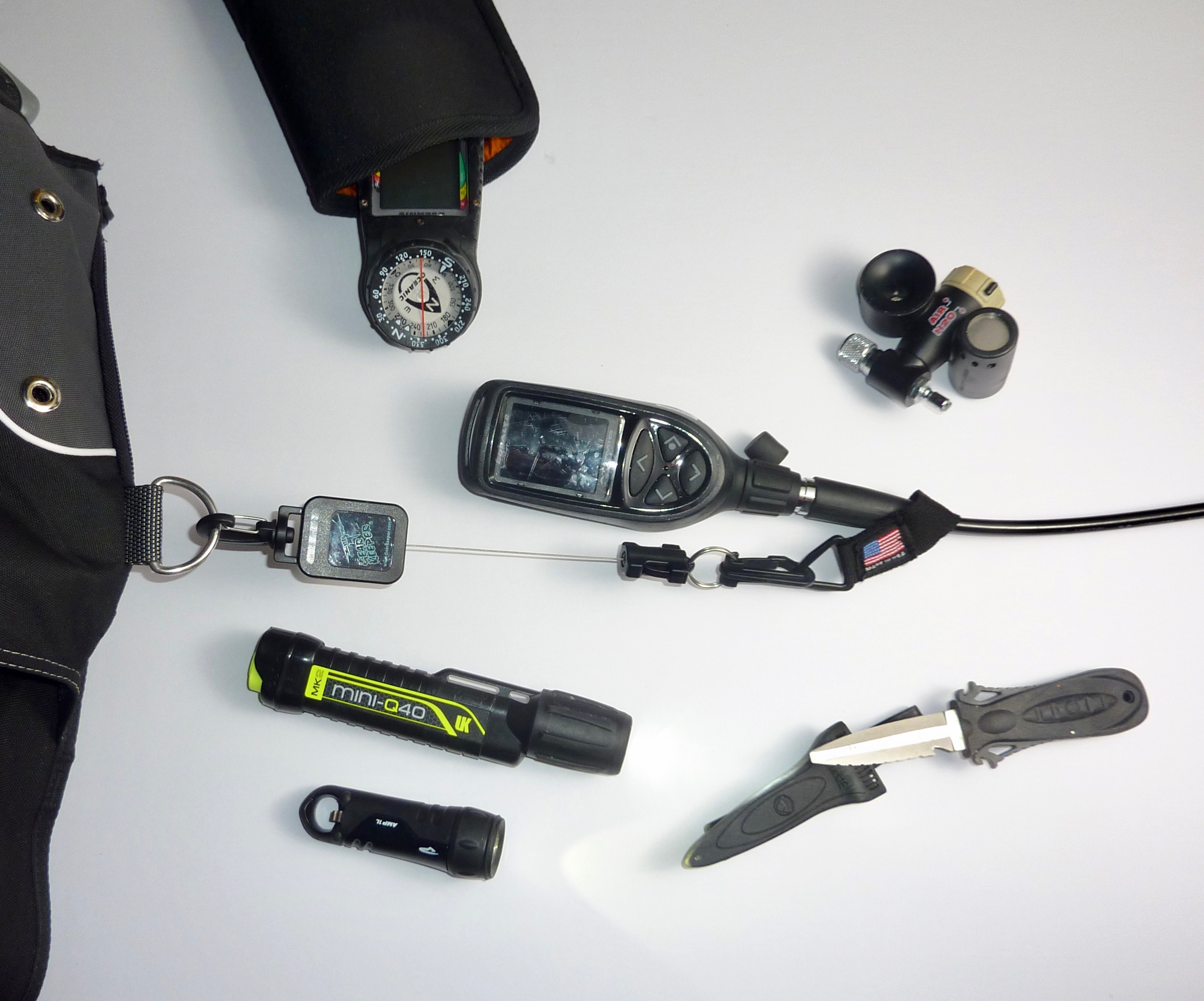A dive knife has long been considered a necessary piece of dive gear for extraction in the unlikely event of entanglement. But more than that, the dive knife has become an important tool for light underwater work, exploration, probing, and hunting.
PURPOSES
Specifically what kind of dive knife you choose will depend largely on its intended use. If you are a spearfisher, you’ll need a razor sharp knife with a sharp point (for quickly dispatching a large fish, if necessary). If you like to take scallops, a sturdy, blunt tip knife is a must. But what any dive knife needs is the ability to extract the diver in a difficult entanglement situation. And what you need for that is a good, sharp edge.
EDGES
Dive knives come with a variety of edges for a variety of purposes. The most common is a simple knife edge. It should be razor sharp—meaning you should be able to shave with it—albeit not necessarily in a comfortable way, but it should take hair off your arm. This edge is for quickly cutting through line, kelp, or for dressing out game, although most dive knives are not especially suited to this task.
Saw or serrated edges allow for a more effective cutting of small branches or rope. Line cutters are odd notches in a blade intended to allow you to gather a handful of small lines, like fishing line, together and cut them all at once. They are also somewhat effective in cutting small rope. They can, however, reduce the overall strength of the blade.
BLADE MATERIAL
The metals used in dive knife making are an alloy of several metals and other elements, usually heat tempered and sometimes forged (hammered) to give the knife blade specific desired qualities. These chief qualities are strength (the ability to be take force without breaking or bending), the ability to hold and edge (a factor of metal hardness), and corrosion resistance. Less important qualities include cost and weight.
For stainless steel knives, the metals used in the alloy are iron, carbon nickel, chromium and other trace metals. In what quantities these elements are combined gives the desired qualities listed above. More carbon will make the steel harder, allowing the knife to hold and edge better and longer. But a hard blade can be brittle and break easily. High carbon steel also tends to be less corrosion resistant. Nickel and chromium give the steel corrosion resistance. Too much and the steel will be soft or too costly. The key is balance.
The best all around dive knives are those with 420 stainless steel. It has a moderate level of carbon for hardness, but not so much as to make the blade brittle or sacrifice corrosion resistance (you still may have to clean it up once in a while with steel wool and a light coat of oil). It holds an edge well and is relatively strong with the ability to take a lot of prying without bending or breaking.
Knives made with titanium alloy blades are also available. They are virtually corrosion proof, hold an edge very well and are very tough. They are also very light weight. The only disadvantage of these knives is their high price tag.
HANDLE, BUTTS, AND SHEATHS
Knife handles should be made of a soft grip but high friction rubber to prevent hand slippage. Make sure the knife fits comfortably in your hand, not to big or too small, especially if you will be using it a lot.
Whether a knife has a metal butt is personal preference. A metal butt can be used as a hammer or to bang your tank for buddy signaling.
The sheath should not be overlooked. The best dive knife in the world is worthless if your sheath cannot hold it in place on your body. At the same time the sheath should quickly release the knife with one hand when needed. Make sure the parts of the sheath are corrosion resistance as well. Straps used with the sheaths should be of the depth compensating type that contract as your wet or dry suit compresses at depth.









